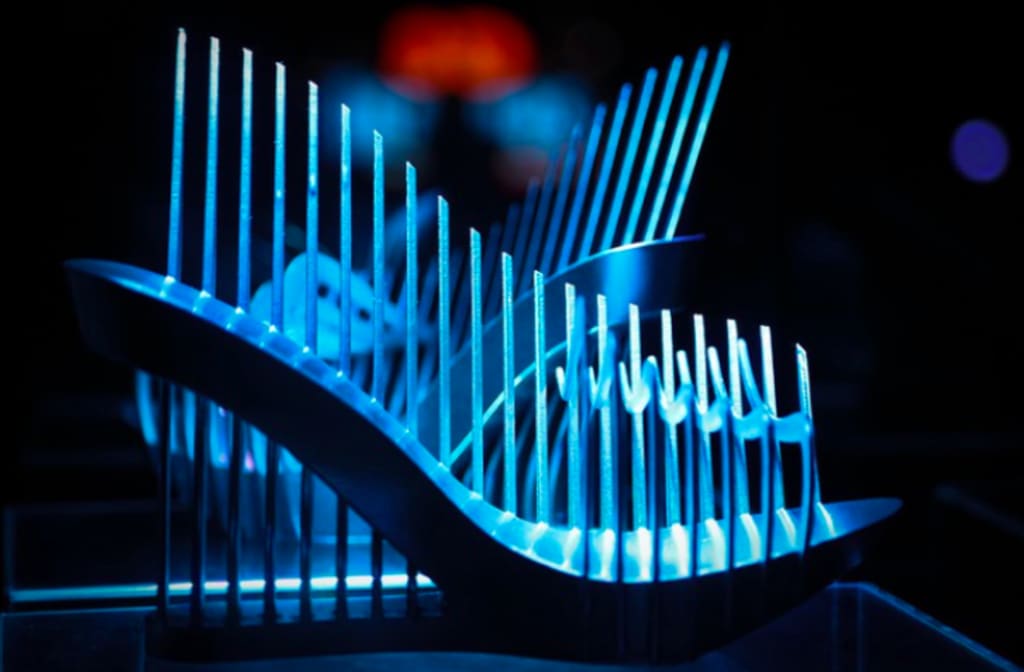Refractory Plasmonics : RRMSB.COM
By Brandsandu.com

Recently, transition metal nitrides have been considered as possible alternatives to noble metals as plasmonic materials. In particular, the local surface plasmonic resonance (LSPR) of refractory transition metal nitrites such as TiN and ZrN is an attractive option for plasmons. Using FDTD simulations, the extinction, absorption and scattering of the TiN nanocube diameter were calculated at about 42 nm with field strength “modes” at different separation distances. We investigated frontal and through orientations and derived the plasmon potential equation from exponential correlation in both directions. It has been found that the smaller the separation distance, the better the connection.
As the separation distance decreases, a redshift is observed in the wavelength of the plasma peak. It is determined that a pair of TiN nanocubes exhibit a separation distance of LSPR wavelength equivalent to that of an isolated nanotube. The “hot spot” area between nanocubes was also identified, which is important for many applications such as cancer treatment, imaging, detection, solar photovoltaic cells, surface-enhanced Raman scattering, near-field scanning optical microscopy, water splitting, and nanoscale optics Device.
The field of plasmonics has been used in various applications, including cancer treatment imaging, detection, photovoltaic solar cells5, surface-enhanced Raman scattering (SERS) near-field scanning optical microscopy, Moisture method, and nano-level optics. Microscopic metal particles interact with visible light in a large amount, and their optical properties are completely different from those of body films or thin films. This is due to the dramatic increase in the ratio of surface atoms to atoms. It’s nanoscale Due to the localized surface plasmon resonance (LSPR) derived from the conducted electron oscillation, a strong enhancement of the electromagnetic field and peaks of the scattering and absorption cross-sections are observed.
The position of the LSPR peak depends on many variables, such as the shape, size, composition, separation distance, and relative dielectric function of the nanostructure. However, there is another interesting factor in the design of plasmonic sensors and imaging systems. It is close to another plasmonic nanoparticle. When two plasmonic nanoparticles are placed close to each other, a coupling effect will occur, which will result in a higher electric field than the electric field generated when the nanoparticles do not interact. There is an exponential relationship between the maximum frequency of the extinction section and the separation distance of the gold elliptical disc dimer.
The nanocube structure has received special attention due to its high plasma enhancement at the corners. In addition, it was also found that the coupling between nanocubes would change the position of the LSPR peak within a specific separation distance. However, most published research has focused on precious metals such as gold, silver, and copper. Gold is the most studied plasma material because it has a strong LSPR in the middle of the visible light region of the spectrum, is non-toxic and anti-oxidant. On the other hand, the LSPR of silver is stronger than that of gold, but it is easily oxidized. However, gold and silver have many disadvantages, such as high cost, thermal instability, and CMOS incompatibility. In addition, the LSPR of gold nanoparticles is not within the range of transparency. For this reason, materials that replace plasmons, such as TiN and ZrN, have found their way. And attracted the attention of researchers, paving the way for the development of new equipment.
The coupling of 42-nm refractory plasmonic (TiN, ZrN) nanocube dimers were investigated using FDTD in both face-to-face, and edge-to-edge orientations. The orientation was found to affect the built-in electromagnetic field intensity, localized surface plasmon resonance (LSPR) peak position, and the extinction, scattering, and absorption cross-sections.
Decreasing the separation distance between the nanocubes led to an increase in the intensity of the generated electromagnetic field, a redshift in the LSPR peak position, and an increase in the extinction, scattering, and absorption cross-sections. Interestingly, a hot spot was found between the adjacent facets of the nanocubes and at the corners in the face-to-face and edge-to-edge orientations. This hot spot in the coupling region was found to be stronger than that at the corners of the cubes. Relatively large separation distances, the hot spots are positioned at the corners of each nanocube and the hot spots resulting from the coupling almost disappeared. A plasmon ruler equation is formulated for TiN-TiN nanocubes for both orientations. TiN and ZrN were shown to have plasmonic modes comparable to those of Au. Ag-Ag showed the most intense LSPR peak of all studied materials followed by Au and then ZrN, which was quite close to Au.
looking to speak with some one for all your branding , marketing ,contentcreation requirements contact Brandsandu
About the Creator
Brandsandu
Brandsandu Is A Complete 360 ° Branding & Digital Marketing Company In Delhi & Ncr Providing A Complete Solution From Branding To Social Media, From Public Relations To Media Buying To Interactive Solutions.






Comments
There are no comments for this story
Be the first to respond and start the conversation.